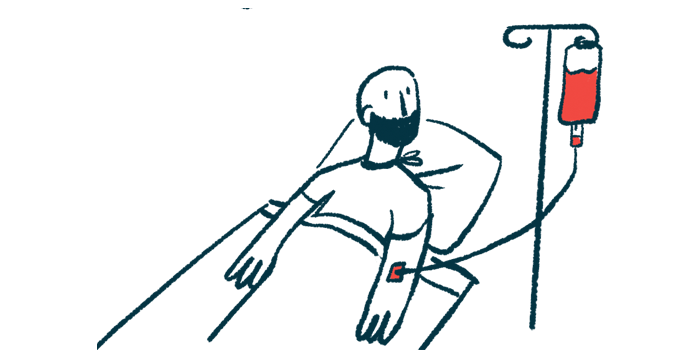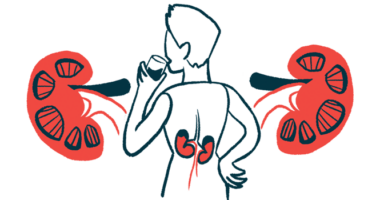Soliris Shown to Ease Symptoms of aHUS Flare in Man, 20: Case Report
Therapy should be available for patients despite high cost, researchers say

After the successful treatment with Soliris (eculizumab) of a 20-year-old man experiencing a flare-up of atypical hemolytic uremic syndrome (aHUS), his medical team called for the therapy to be made available to all aHUS patients, despite its high cost.
“[Soliris] should be started early if plasmapheresis [plasma exchange therapy] is not effective, if there are complications inherent to the technique, or if there are potentially fatal complications of aHUS,” the researchers wrote.
In this case, the therapy eased the flare symptoms, set off by a viral infection, of a young man with aHUS who failed to respond to corticosteroids and plasma exchange therapy.
The team noted, in their report, that Soliris is costly, which means it may not be readily available to all patients.
“Despite the high costs, we consider it important that hospitals implement protocols that allow for [its] rapid availability,” they wrote.
The report, “The Importance of Eculizumab in the Treatment of Atypical Hemolytic Uremic Syndrome,” was published in the journal Cureus.
Available aHUS treatments
aHUS happens when a fault in the complement system makes it overly active. This causes blood to clot, and block its own flow to various tissues in the body, including those of the brain, heart, and kidneys. The complement system is a part of the immune system that helps the body fight off infections.
Most patients with aHUS develop hemolytic anemia, meaning they lack enough red blood cells, as these cells are broken down faster than they are made in the body. People with aHUS also are likely to develop thrombocytopenia — low numbers of platelets, the blood cell fragments that promote blood clotting — and kidney damage.
Soliris is a monoclonal antibody that binds to C5, a protein of the complement system. By doing so, Soliris prevents the complement system from getting overly active, which is expected to help ease aHUS symptoms.
It has been shown to be more effective than other treatments, including plasma exchange therapy, also known as plasmapheresis. In this procedure, a machine is used to separate plasma — the clear, liquid part of blood — from the blood and swap it for healthy plasma, or a plasma substitute, before the blood is returned to the body.
Plasma exchange is more often prescribed as an aHUS treatment, in part because of the therapies’ relative costs. In addition, Soliris is available only through restricted programs that require special authorization. In the U.S., the therapy may be prescribed only through a program called SOLIRIS REMS.
Now, a team in São Miguel, an island of Portugal, reported the case of a young man with a 10-year history of aHUS who was treated with Soliris after showing no response to corticosteroids and plasmapheresis. The patient also had hypertension (high blood pressure), which was being managed with enalapril.
The man came to the hospital’s emergency department with a fever, painful swallowing, and a headache that had been lasting for three days.
A physical examination revealed jaundice — a yellowing of the skin caused by the accumulation of a molecule released in response to the excessive breakdown of red blood cells. He also had multiple red-colored papules, or small, inflamed bumps on the skin, covering the face, hands, feet, and abdomen.
Blood testing revealed thrombocytopenia. Higher-than-normal levels of creatinine, a waste product normally removed by the kidneys, indicated acute kidney injury, which occurs when the kidneys suddenly stop working. A close look at a blood sample under the microscope revealed schizocytes, or red blood cell fragments.
A test for enteroviruses came back positive, which led doctors to suspect that an aHUS flare-up might have been triggered by coxsackieviruses, a type of enteroviruses that cause a mild infection known as hand, foot, and mouth disease.
The patient was admitted to the intensive care unit and started on plasmapheresis once per day. However, his symptoms worsened and he developed hemolytic anemia. The frequency of plasmapheresis was increased to two sessions per day. He also received a blood transfusion and was started on corticosteroid therapy with methylprednisolone on his third hospital day.
Soliris effective in case
In the face of no improvement, the man was started on Soliris (900 mg once per week) on his fifth hospital day. Since he was not vaccinated against meningococcal disease, he also received ceftriaxone, an antibiotic, to prevent a possible meningococcal infection. Meningococcal vaccination was administered as soon as possible.
Notably, patients treated with Soliris are at an increased risk of developing meningococcal disease, an infection caused by the bacteria Neisseria meningitidis, that can rapidly become life-threatening if not recognized and treated early.
After four doses of Soliris, the man’s jaundice, hemolytic anemia, thrombocytopenia, and kidney damage were alleviated.
“The clinical evolution was only favorable after the administration of eculizumab, highlighting the importance of early initiation of this therapy,” the team wrote.
About two weeks after admission, the man was discharged from the hospital. He continued receiving Soliris at a dose of 900 mg once per week for one month, and 1,200 mg once every two weeks thereafter, while under monitoring. His symptoms continued to ease.
“The early availability of [Soliris] can significantly improve the prognosis of [aHUS] patients,” the team concluded.








